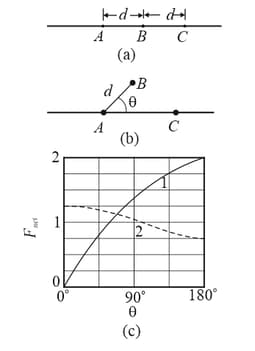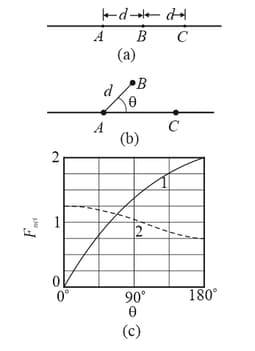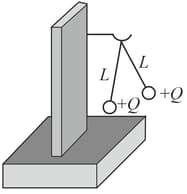Figure shows an arrangement of three charged particles separated by distance . Particles and are fixed on the -axis, but particle can be moved along a circle centred on particle . During the movement, a radial line between and makes an angle relative to the positive direction of the -axis (figure ) . The curves in figure give, for two situations, the magnitude of the net electrostatic force on particle due to the other particles. That net force is given as a function of angle and as a multiple of a basic amount For example, on curve, at we see that . For the situation corresponding to curve , what is the ratio of the charge of particle to that of particle (including sign)?



Important Questions on Coulomb's Laws and Electric Field
Figure shows an arrangement of three charged particles separated by distance . Particles and are fixed on the x-axis, but particle can be moved along a circle centred on particle . During the movement, a radial line between and makes an angle relative to the positive direction of the -axis (figure ). The curves in figure give, for two situations, the magnitude of the net electrostatic force on particle due to the other particles. That net force is given as a function of angle and as a multiple of a basic amount . For example, on curve, at , we see that . For the situation corresponding to curve (dash line) what is the ratio of the charge of particle to that of particle ?

Two small balls having equal positive charge (coulomb) on each is suspended by two insulated string of equal length meter, from a hook fixed to a stand. The whole set-up is taken in a satellite into space where there is no gravity (state of weightlessness). Then the angle between the string and tension in the string is

